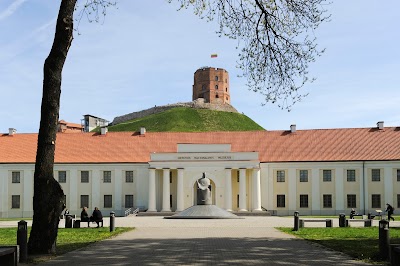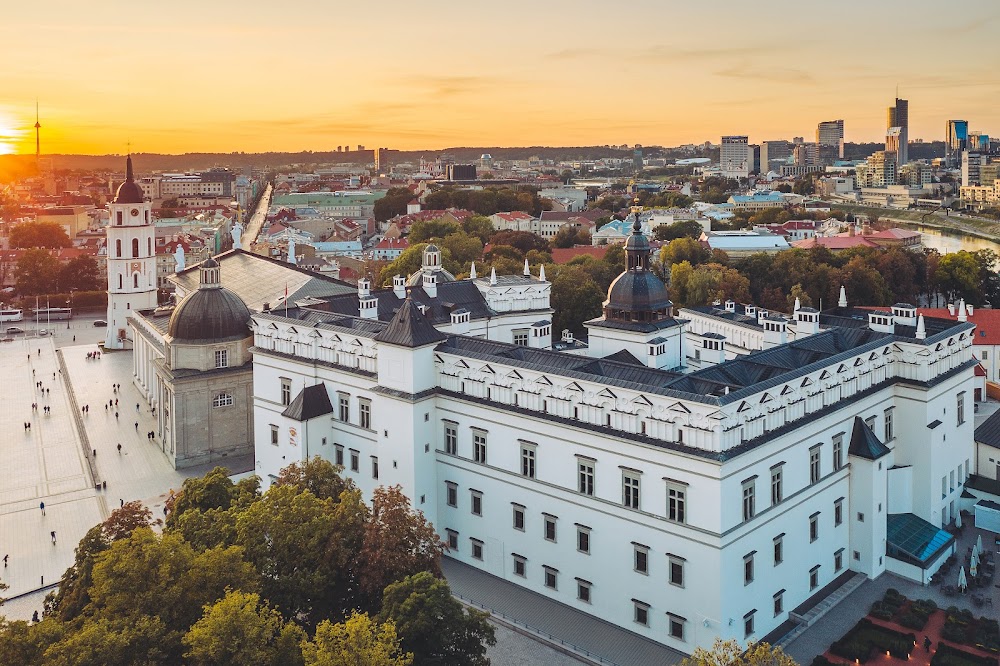National Museum of Lithuania (Lietuvos nacionalinis muziejus)
Overview
The National Museum of Lithuania, nestled in the heart of Vilnius, invites visitors on an enriching journey through the nation’s rich history and cultural heritage. As Lithuania’s foremost repository of historical artifacts, this museum is a must-visit for those seeking to understand the essence of this Baltic nation’s identity.
The museum's origins date back to the 19th century, founded by historian and ethnographer Eustachy Tyszkiewicz in 1855 as the Museum of Antiquities in Vilnius. Over the years, through political upheavals and the relentless flow of time, the museum transformed and reached its current form in 1952. Today, it stands as a guardian of Lithuania's legacy, carefully preserving artifacts and documents that tell stories from prehistoric times to the present day.
Situated in several historic buildings, the most notable is the New Arsenal, located at the base of Gediminas Hill. This prime location not only provides stunning views of Vilnius’s medieval core but also allows easy access to other significant sites like Gediminas’ Tower and the Palace of the Grand Dukes of Lithuania.
Upon entering the museum, visitors are welcomed by a series of thoughtfully curated exhibits. The collection spans from ancient archaeological findings to symbols of Lithuanian nobility, offering a chronological exploration of the nation’s past. Highlights include displays of prehistoric tools, medieval weaponry, traditional costumes, religious artifacts, and items from Lithuania’s Soviet era, each providing a tangible link to crucial moments in the nation’s history.
A highlight of the museum is the ethnographic exposition, which vividly portrays rural Lithuanian life. Through detailed dioramas and authentic artifacts, visitors gain insights into traditional farming, domestic life, and ancient crafts. This engaging section features life-sized reconstructions and interactive elements, making it especially appealing to both adults and children alike.
The museum also dedicates spaces to notable Lithuanian figures and significant events. Personal stories of freedom fighters, influential leaders, and cultural icons are intricately woven into the exhibitions, bringing to life the struggles and victories that have shaped Lithuania's identity. A particularly moving section focuses on the country’s fight for independence from Soviet control, showcasing protest banners, clandestine publications, and personal items belonging to key dissidents.
Among the museum's treasures is its extensive coin collection, one of the most comprehensive in the region, tracing the evolution of Lithuanian currency from its earliest forms to modern times. Additionally, the museum's archives are a haven for historians, housing thousands of documents, photographs, and manuscripts that detail the intricate tapestry of Lithuania's past.
Another standout feature is the Museum of Applied Arts and Design, an integral part of the National Museum. Here, visitors can explore themed exhibitions that celebrate Lithuanian artistic mastery in textiles, ceramics, and metalwork. Each piece—from finely woven tapestries to exquisite glass sculptures—highlights the country’s rich tradition of craftsmanship and innovation.
The museum enhances each visit through its commitment to accessibility and education. Informational plaques in multiple languages and guided tours provide additional context and storytelling, ensuring that foreign visitors leave feeling informed and inspired. Modern amenities, including a gift shop and a cozy café, allow guests to relax and reflect on their experience in comfort.
The National Museum of Lithuania is more than just a collection of artifacts; it serves as a gateway to understanding the resilient spirit and cultural richness of the Lithuanian people. For international travelers, a visit to this museum is not merely an educational outing but a profound exploration of an enduring cultural heritage flourishing in the modern world.
Vilnius, a city rich in history, makes the National Museum the perfect starting point for exploration. As you wander through its halls, you'll not only delve into Lithuania’s fascinating history but also gain a deeper appreciation for its impact on European and global narratives. Each exhibit tells a story, making the past relatable and significant.
In conclusion, the National Museum of Lithuania stands as a beacon of historical and cultural enlightenment in Vilnius. Its extensive and diverse collections offer an engaging and comprehensive overview of Lithuanian history, making it an essential stop for any traveler eager to appreciate the depth and beauty of this remarkable nation.






